During World War II, the US Army Air Forces (USAAF) subscribed to the concept of daylight precision bombing. Working with the British Royal Air Force’s (RAF) Bomber Command, the two nations conducted what became known as the Combined Bomber Offensive (CBO). Operating under the dictates of the January 1943 Casablanca directive, each respective air force executed operations in accordance with their existing doctrines. The intent was to destroy both German morale and war-making capabilities through a sustained aerial assault. While the USAAF remained committed to hitting specific targets within a confined area during the day, their RAF counterparts operated at night and struck large swaths of the German urban landscape. With the British conducting area bombardment at night and the Americans executing precision strikes during the day, the two nations initiated the “round-the-clock” aerial offensive. Starting in January 1943, the Eighth US Air Force stationed in the United Kingdom began hitting targets in Germany on a regular basis. However, these initial results were lukewarm as losses in both aircrews and aircraft mounted. USAAF Chief of Staff General Harley “Hap” Arnold was increasingly disappointed with the Eighth Air Force’s effort and hectored his subordinates for better effects and to prove the efficacy of airpower in the global conflict.
The Schweinfurt–Regensburg Raid
In August, hoping to substantially affect Nazi war industry and address Arnold’s concerns, US air planners developed the idea of a dual strike mission hitting two significant targets deep inside Germany. Evolving from an earlier plan code-named JUGGLER, a modified strike targeted the Messerschmitt aircraft factory at Regensburg and ball bearing production plants at Schweinfurt. By attacking these targets, air planners hoped for a two-pronged effect: curb Luftwaffe fighter production while creating a ball bearing shortage, resulting in a wholesale industrial collapse. The plan was more than just a strike on two locations; it was to be a sequenced assault using two air divisions operating in concert. The two divisions were to take off, form, and fly toward their designated targets separated by a 30-minute interval. By launching two separate raids on the same morning, planners expected to split Luftwaffe aerial defenses, thereby reducing attacks on either bomber force. In addition to the dual strike methodology, one of the bomber formations would not return to England on its usual trek. Instead, the bombers hitting Regensburg would divert on a southerly course over the Alps and fly to the newly liberated areas of North Africa. Much like the dual strike approach, this southern egress was also expected to throw the Luftwaffe off the bombers’ trail and frustrate the German fighters’ defensive efforts. In addition to the dual strikes, diversion raids from medium bombers and fighters were also planned, to draw further attention away from the larger inbound formations.
This mission profile was replete with danger. It called for an aerial battle that was approximately 1,000 miles long and five miles above the earth. At that altitude, subzero temperatures and a lack of oxygen were a constant concern for crews flying in unpressurized aircraft. Hypoxia and frostbite were constant companions as the bomber crews fought both the Luftwaffe and the elements. Unlike their ground counterparts, who could find shelter in a fighting position or a prepared bunker, airmen flew in thin, uninsulated, aluminum fuselages with little armor against German 88 mm Flak guns and 20 mm cannons. There was no place to hide. In addition, if a crewman was hit, there was no corpsman or medic available, nor an aid station to evacuate the wounded. With nowhere to go, casualties were stuck in place for the mission’s duration.
While initially scheduled for August 7, the plan was delayed for weather and postponed until the 17th. A total of 376 B-17s from the 1st and 3rd Air Divisions were scheduled to take off that morning. The commander of the 3rd Air Division, Colonel Curtis LeMay, briefed his crews on their target at Regensburg and then addressed their route toward Africa. He reminded his men to “prepare for sleeping on the ground for a day or two, no Savoy’s or Claridge’s [hotels] in the North African desert, you know. …” Following the 3rd, the 1st Air Division was to depart 30 minutes later and fly toward Schweinfurt with a return to East Anglia after the raid. Still, there was an important distinction between the two wings. LeMay stressed instrument flying in his division as a part of his relentless training schedules. Familiar with such flying, his crews could take off even as British fog descended upon their airfields. However, LeMay’s counterpart, Brigadier General Robert Williams’s 1st Bomb Division, was not practiced in such flying with the command stuck on the ground until the weather cleared.
LeMay’s seven bomb groups began their takeoffs around 0800. Given the low ceiling, he was amazed there were no midair collisions during form-up as the bombers penetrated two layers of overcast. Climbing through overcast during form-up was always fraught: dozens of planes flying in the same airspace attempting to link up with limited visual references was a recipe for disaster. Eventually, 146 B-17s of the 3rd Air Division formed and orbited over the navigation beacon in East Anglia. In the meantime, the 1st Air Division remained on the ground with no indication of becoming airborne soon. Watching their fuel gauges begin to move, the 3rd Air Division formation had to either scrub the mission or depart for their target. LeMay chose the latter. The 1st Air Division remained on the ground for the next three hours, well after LeMay’s command departed on its 500-mile journey to the target. In the 3rd Air Division's lead aircraft, LeMay headed toward Regensburg, crossing the Dutch coast by 1000. By mid-morning, it was clear that the planned dual strike with the hope of splitting German air defenses had failed. The results would be devastating.
Providing additional protection to the inbound bombers were two groups of American P-47 Thunderbolt fighters. While a capable aircraft, the P-47 at this time was limited in range with fighter escort available only up to the German border. During this mission, some of the P-47s arrived late at the rendezvous point, and others failed to arrive at all. The Thunderbolts that did show up were too few and covered only the forward groups in the bomber formations, leaving the rear formations uncovered. Adding to the 3rd Air Division's woes was the same weather that grounded 1st Air Division, delaying the planned diversion missions. With the diversion scrubbed, all available Luftwaffe fighters could now focus on the 3rd Air Division as it went forward all alone.
Even before the P-47s departed for home, the Luftwaffe began pressing its attacks, hitting the bomber formations in the rear. With the aerial battle fully joined by 1025, it was only minutes later when the American fighters that made the rendezvous had to return home. Disappointed with the P-47 coverage and lack of fighter support, LeMay sardonically stated afterward: “Our [only] fighter escort had black crosses [of the Luftwaffe fighters] on their wings.” Now without any friendly fighter escort and heading deeper into Germany, LeMay’s command endured a continuous aerial onslaught. Slashing through the American formations, German pilots attacked the lumbering bombers, knowing that the B-17s’ defenses were weakest in the front. Some also came vertically from above, targeting the bomber’s top turret and flight deck. Others dropped aerial bombs or launched rockets.
Heading to the target 150 miles past the Rhine River, the battle continued eastward at a speed of 180 mph. Wave after wave of German fighters engaged the hapless bomber formation as it moved en masse. Passing Mannheim, twin-engine ME-110 and JU-88 fighters engaged with their heavier caliber armament. A trail of smoking bombers marked the formation’s path. During this period, 17 bombers were shot down, most of them from the lower and rear squadrons of the formation. The only positive for the 3rd Air Division was the clear weather, allowing bombardiers to easily sight the Messerschmitt factory. The 129 surviving bombers found the Regensburg facility and dropped 300 tons of high explosives and incendiaries. They damaged most of the buildings and (unknowingly) the fuselage jigs for a new aircraft designated the ME-262. LeMay recalled the objective being “totally destroyed,” with one group placing 58 percent of its ordnance within 1,000 feet of the aim point and 94 percent within 2,000 feet. While the raid itself was successful, the mission was still far from over. The 3rd Air Division still had to fly to North Africa.
After their weather cleared, the 1st Air Division eventually took off with 230 B-17s on a 400-mile trek to the target. Given the three-hour delay, German fighters had ample time to land and reload to counter the second strike. The 1st Air Division’s B-17s were hit as they arrived over Antwerp with assaults also coming in waves. Attacking out of the sun and hitting the high squadron, Luftwaffe pilots zoomed through the bomber groups and into the lower formations. In addition to these diving attacks, the exposed and lightly defended trailing bomber squadrons were again targeted. Arriving over Mannheim, the 1st Air Division turned northeast and lined up for their initial point for the bomb run over the Schweinfurt factories. Fighting their way to the target, they dropped their payloads, with 80 hits on two main plants and 20 more in a third. Returning home, the 1st Air Division received the same treatment as it did when inbound: German fighters continued their attacks until the bomber formation cleared the continent. Two of the participating bomber groups suffered extensively, with the 91st losing 43 percent of its crews launched and the 381st losing 50 percent.
Impact of Schweinfurt–Regensburg Raid
As a result of the raid, German ball bearing production dropped from 140 tons in July to just 69 in August and 50 in September. Along with this significant drop, larger lessons were learned for both sides. Given the strike, German ball bearing manufacturing adjusted, with much of it diffused, rebuilt, or sourced from other locations. With these adjustments, the Third Reich was never deficient in ball bearings. On a larger scale, German industrial production also learned and became increasingly diffused, placed underground, or quickly rebuilt using forced/slave labor. Furthermore, by 1943, the Nazis finally mobilized the nation’s full economic capability, effectively countering much of the CBO’s earlier effects. With all these considerations and adjustments, German industrial production became more resilient until late in the war.
While the short-term damage to German manufacturing was at least encouraging, the cost was still high. The 1st Air Division lost 36 B-17s and 370 airmen out of the 183 aircraft that dropped their bombs. It was an unstainable loss rate of 20 percent. Given such percentages, Eighth Air Force crews would not statistically survive their required tours of 25 missions. With these losses, one of the obvious lessons for the Americans was the need for a long-range fighter escort capability. Another was the need to revisit targets: as the Germans rebuilt their bombed factories, it became clear one strike was never fully decisive.
After departing the Regensburg area, the 3rd Air Division headed south toward the Alps, the Mediterranean Sea, and their planned bases in Africa. The unexpected turn south befuddled some German defenses, and it saved the wing from further intense combat. But it did not mean the surviving bombers here home free. A few damaged planes and crews were able to limp to Switzerland, where aircraft were confiscated and the crews captured. Given the earlier delay in launching the raid and waiting for the 1st Air Division, the flight over the Mediterranean saw five more planes drop out of formation and into the sea due to fuel starvation. Around 1730, after some 11 hours of flight, the surviving crews arrived at the North African coast. Confusion reigned, however, as crews attempted to land at their assigned airfields, but undermanned control towers gave faulty instructions. Exhausted, damaged, or running out of fuel, crews landed bombers wherever they could find a suitable location.
Telergma airfield was supposedly a maintenance depot, and 3rd Air Division crews expected plenty of mechanics and spare parts to help repair their damaged aircraft. But upon landing, the battered crews found little of either. With little external support, they serviced, repaired, or jury-rigged their bombers by hook or by crook. The command eventually pieced together approximately 80 airworthy bombers while abandoning dozens in place. As warned by LeMay during the mission briefing days earlier, crews found that deluxe accommodations in North Africa included sleeping on a cot, while others “enjoyed” the pleasures of a slit trench in the African desert. On the final leg home, the crews made a final bomb run over the French airfield at Bordeaux. Given the marginal condition of many returning airframes, three planes crashed due to malfunction before the rest returned to England with none downed by enemy action. In all, 3rd Air Division lost 24 aircraft during the shuttle mission with the percentage unfortunately like that of the 1st Air Division.
While the raids themselves had been successful in hitting the targets, the losses were steep, costing 60 bombers and their highly trained crews. Furthermore, the results were largely temporary as the Germans recovered quickly. Given this experience, the Eighth Air Force did not send another unescorted raid deep into Germany for months. In the following weeks, bomber crews struck targets within range of fighter escorts or along the continent’s coastline. Additionally, planners scrapped the idea of future shuttle missions to North Africa. Hoping to leverage the Mediterranean theater’s characteristically better weather, the logistical shortfalls and difficulties experienced by the 3rd Air Division in North Africa dashed any hopes of regularly scheduled shuttle missions. While more and more planes and crews arrived in the United Kingdom, the American strategic bombing offensive was clearly in a crisis. For the next few months, the Eighth Air Force would experience more of the same mauling. Months would pass before Americans would begin to see significant changes in their leadership, equipment, and doctrine. Only after January 1944 would the scales in the air war begin to tip in the Allies’ favor.
References
Wesley F. Craven and James L. Cate, The Army Air Forces in World War II, Volume II Europe: Torch to
Pointblank, August 1942 to December 1943. University of Chicago, 1949.
Richard Davis, Bombing the European Axis Powers: A Historical Digest of the Combined Bomber
Offensive, 1939-1945. Air University Press, 2006.
Roger A. Freeman, The Mighty Eighth: A History of the Units, Men, and Machines of the US 8th Air Force.
Orion Books, 1970.
Roger A. Freeman, The Mighty Eighth: War Manual. Cassel Publishing 1984.
Curtis E. LeMay and Mackinlay Cantor, Mission with LeMay. Doubleday and Company, 1965.
Papers of Curtis E. LeMay, Unpublishing Manuscripts, Library of Congress.
John Curatola, PhD
John Curatola, PhD, is the Samuel Zemurray Stone Senior Historian at the Jenny Craig Institute for the Study of War and Democracy.
Cite this article:
MLA Citation:
APA Citation:
Chicago Style Citation:
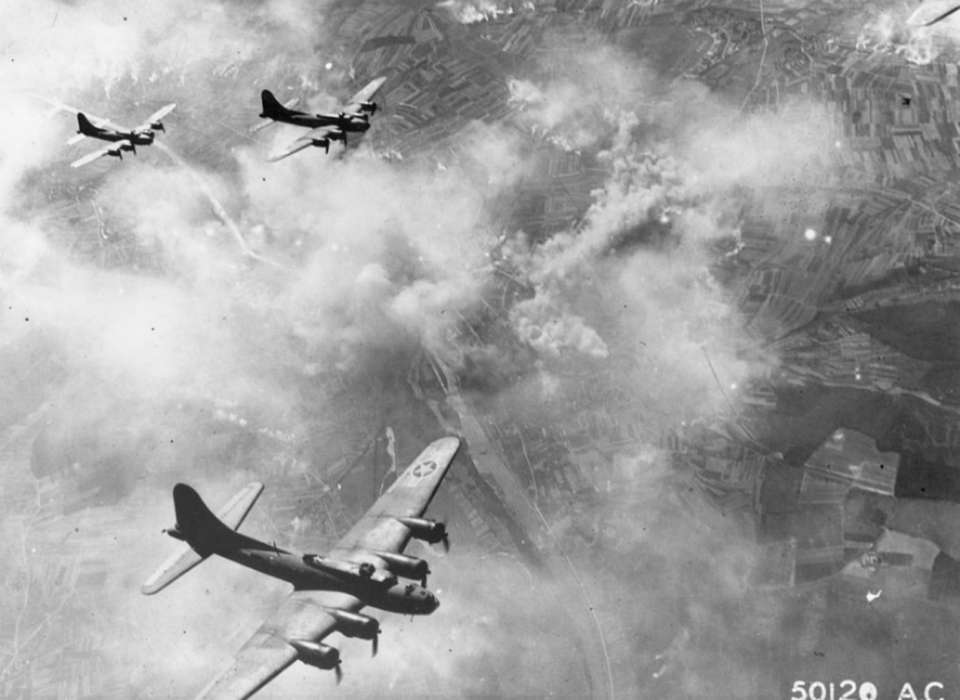
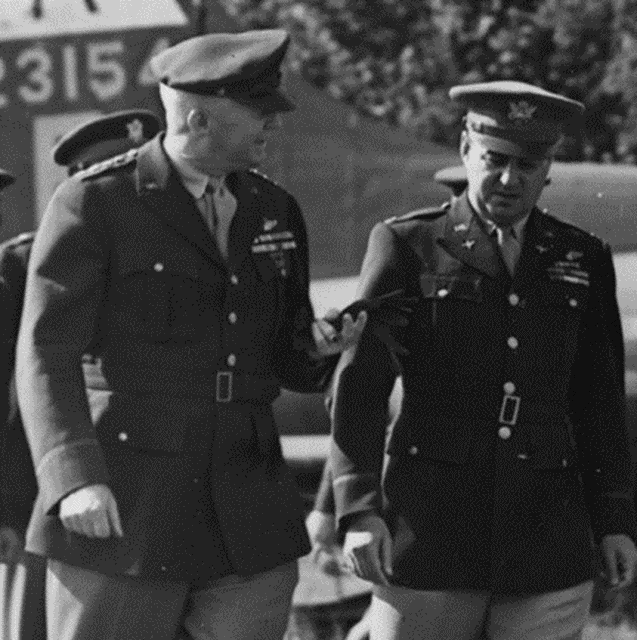
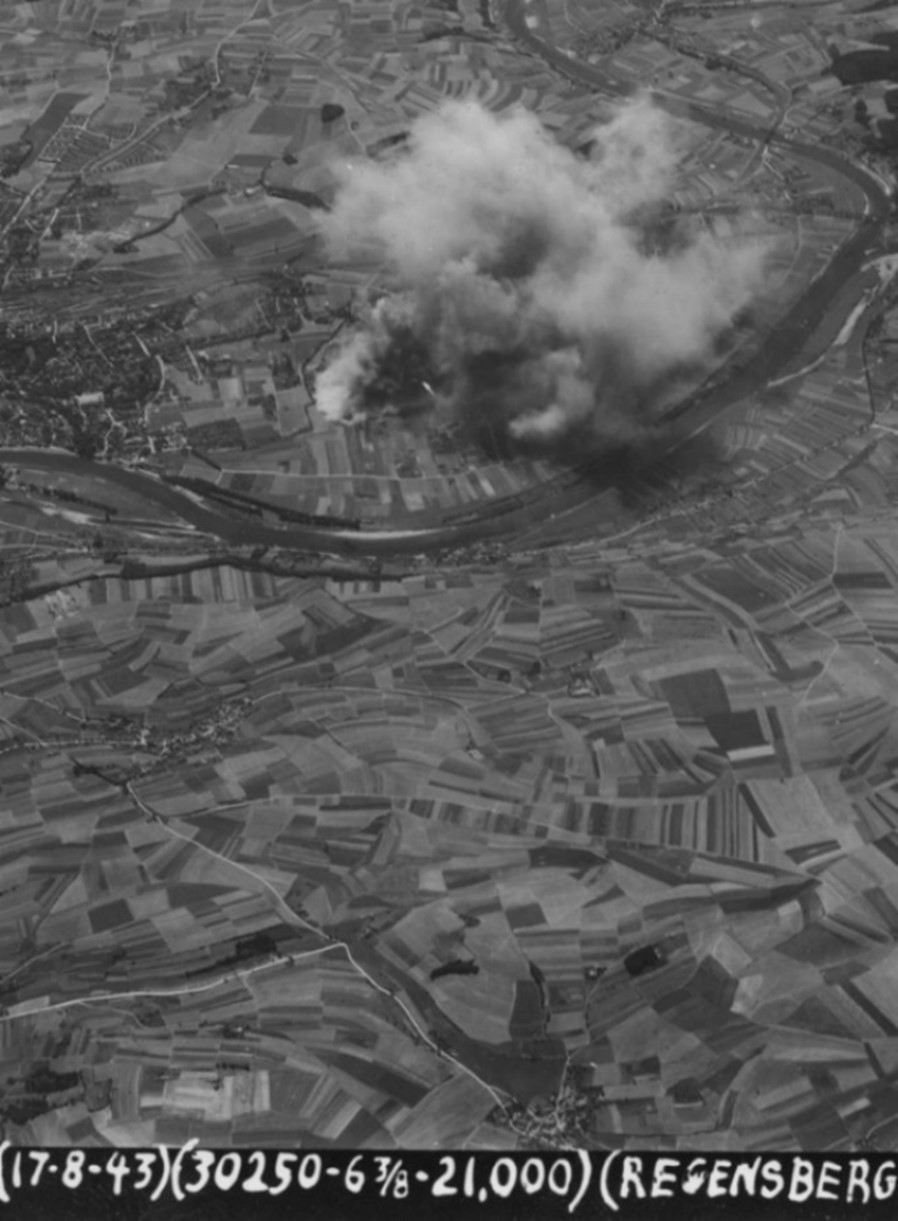
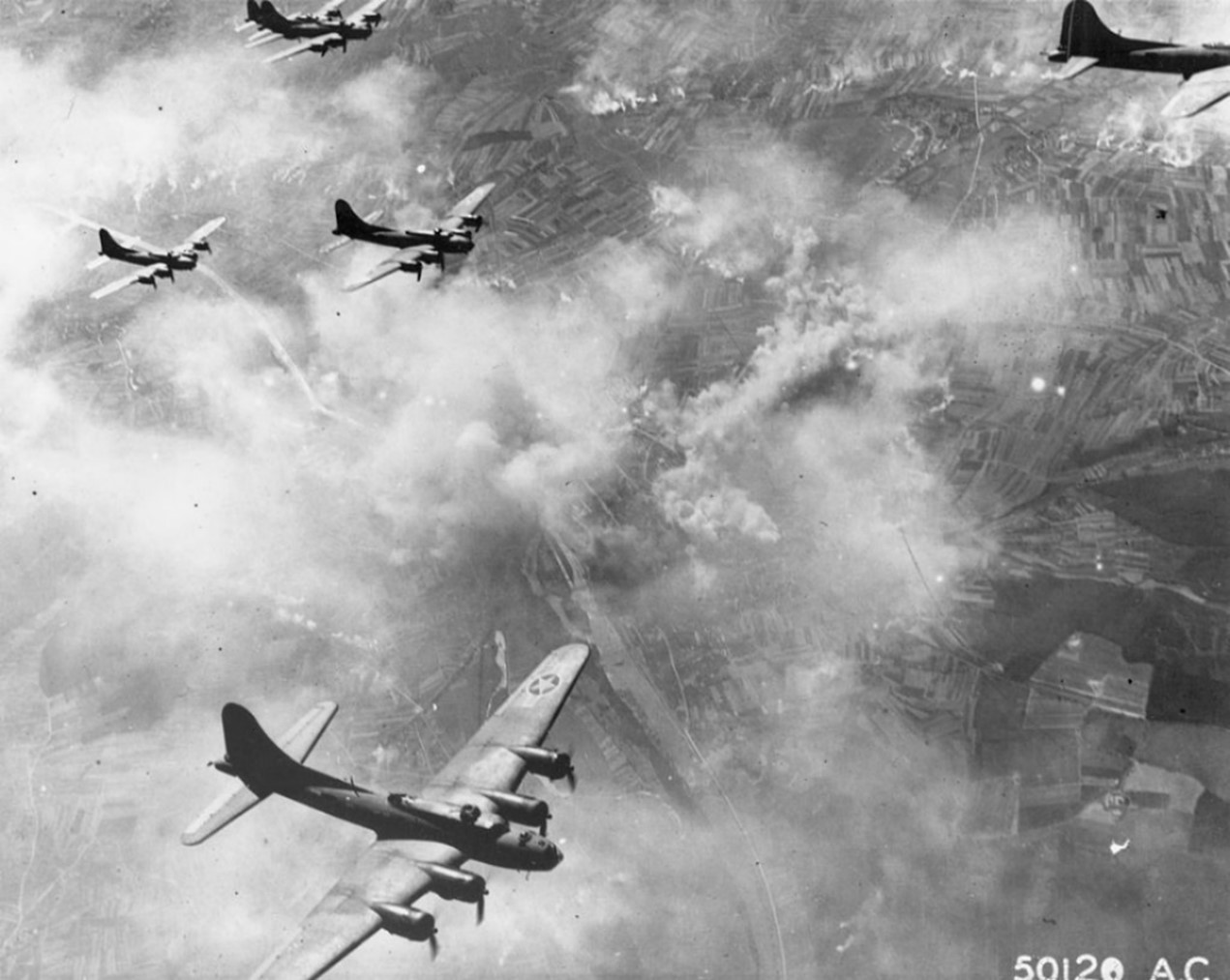
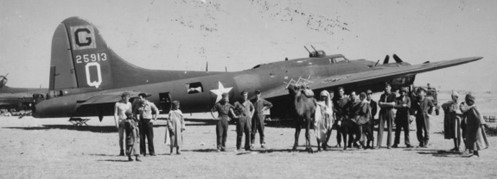

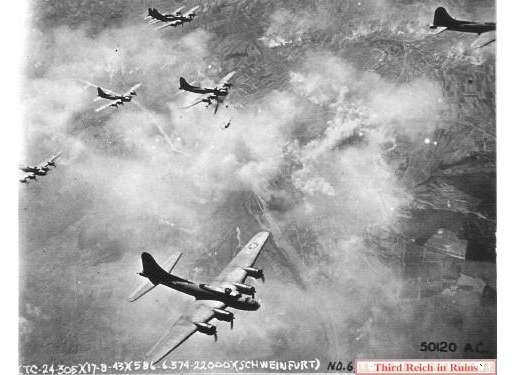



![Max Fuchs, New York City cantor, sings as Rabbi Sydney [sic] Lefkowitz, Richmond, VA, conducts the first Jewish services from Germany.](/sites/default/files/styles/max_650x650/public/2025-10/image1.jpg)



